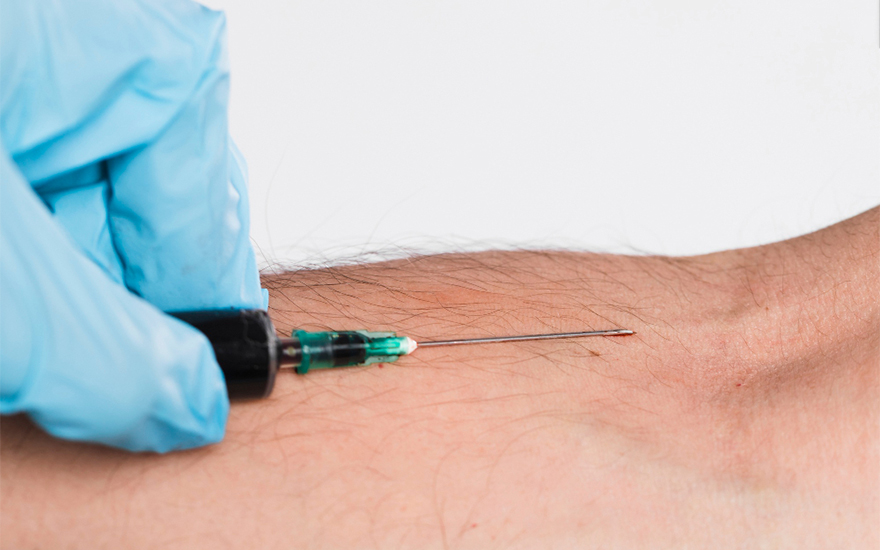
December 28, 2023
A peripheral nerve block is a medical procedure widely used in both surgical and pain management settings. It involves the administration of local anesthetic or neurolytic agents to specific nerves or nerve groups to provide analgesia and temporary sensory or motor blockade.
This technique offers numerous advantages over traditional systemic anesthesia, including targeted pain relief, reduced opioid dependence, and a decreased risk of systemic side effects. Understanding the principles, techniques, and applications of peripheral nerve blocks is crucial for healthcare professionals involved in perioperative care and chronic pain management.
In this article, we will delve into the anatomy and physiology of peripheral nerves, explore the different types of nerve blocks, discuss their indications and benefits, outline the procedural steps and techniques, highlight potential complications, and emphasize post-procedure care for optimal patient outcomes.
Let´s see our topics for the blog!
What is a peripheral nerve block?
Picture this: you’re going for a medical procedure or surgery, and the thought of being completely knocked out under general anesthesia makes you a little uneasy. That’s where peripheral nerve block come in. It’s a technique used to numb specific nerves in your body, allowing you to be comfortable and pain-free during the procedure without the need for heavy sedation.

Peripheral nerve blocks have been around for quite some time. In fact, the earliest accounts of regional anesthesia date back to the ancient Egyptians, who used plant extracts to numb specific areas of the body. Thankfully, we’ve come a long way since then, with advances in both the understanding of nerve anatomy and the development of local anesthetics that have made peripheral nerve blocks safer and more effective than ever.
Anatomy and Physiology of Peripheral Nerves
- Structure and Function of Peripheral Nerves: Peripheral nerves act as the body’s electrical wiring, transmitting messages between the brain and various body parts.
- Nerve Pathways and Distribution: These nerves follow specific pathways, akin to highways, carrying signals for functions like muscle movement or pain sensation.
- Nerve Sensitivity and Response to Blockade: Local anesthetics disrupt nerve function temporarily, blocking pain signals and providing relief. It’s like a “road closed” sign for pain messages, offering pain-free zones in the body.
Types of Peripheral Nerve Blocks
Local Anesthetic Infiltration:
- Targeted relief: Direct injection of numbing medication to the surgical site or specific area of pain.
- Perfect for spot treatment: Ideal for addressing localized pain without affecting surrounding areas.
Single Nerve Block:
- Precision numbing: Injection of local anesthetic around a single nerve.
- Broad relief: Numbs a larger area supplied by the targeted nerve, providing comprehensive pain relief.
Plexus Block:
- Extensive pain management: Targets a bundle of nerves (plexus) to block sensation and pain in a broad area.
- Blanket of numbness: Ensures comprehensive pain relief, such as in the arm or leg, by numbing the entire plexus.
Continuous Catheter Infusion:
- Prolonged comfort: Involves the continuous infusion of a local anesthetic through a small tube near the nerves.
- Extended pain relief: Provides a slow, steady flow of numbness, ensuring comfort over an extended period.
Indications and Benefits of Peripheral Nerve Block
Surgical Applications:
- Peripheral nerve blocks are increasingly favored in surgical settings.
- They can serve as the primary anesthesia method or complement general anesthesia.
- Particularly effective for procedures involving extremities or specific body regions, enabling surgeons to work with precision and minimize sedation requirements.
Reduced Systemic Side Effects:
- By directly targeting nerves, peripheral nerve blocks lessen the necessity for systemic medications.
- Lower doses of local anesthetics are used, decreasing the likelihood of adverse effects like nausea or drowsiness.
- These blocks offer pain relief without the unwanted systemic consequences often associated with traditional anesthesia methods.
Keep in mind, however, that peripheral nerve blocks may not be suitable for everyone. The choice of technique depends on various factors, including the type of procedure and individual medical history. Consultation with a medical professional is crucial to determining the most suitable approach for your specific needs. Stay informed and comfortable throughout your surgical journey!

Procedure and Techniques for Performing Peripheral Nerve Block
If you haven’t heard of peripheral nerve blocks before, let me break them down for you. It’s like giving the nerves in your body a temporary vacation so they don’t send pain signals to your brain. Sounds pretty sweet, right? Well, the procedure and techniques involved are actually quite fascinating.
Patient Evaluation and Preparations:
- Your doctor evaluates your medical history and performs a physical examination to ensure you’re a suitable candidate.
- Allergies, bleeding disorders, and medication intake are considered to avoid any interference with the nerve block.
- Honesty about fears, including needle phobias, is encouraged for a smooth procedure.
Equipment and Medication Setup:
- Your doctor gathers necessary equipment and medication, including needles, to prepare for the nerve block.
- Expertise ensures a comfortable and efficient setup process.
Nerve Localization Techniques:
- Various techniques, such as ultrasound or nerve stimulation, are employed to pinpoint the specific nerves requiring attention.
- An impeccably good sense of touch aids in accurate nerve localization.
Injection Approaches and Needle Guidance:
- Using different approaches and techniques, your doctor administers the local anesthetic via needle to block pain signals.
- Precision ensures effective pain relief by redirecting pain signals away from the brain.
Complications and Risks Associated with Peripheral Nerve Block
While peripheral nerve block can work wonders in relieving pain, like any medical procedure, there are some potential complications and risks to be aware of. Don’t worry, though; they’re usually quite rare.
Local Anesthetic Toxicity: Too much anesthetic entering the bloodstream can lead to side effects like dizziness or confusion. Rest assured, your doctor will carefully monitor the dosage to keep you safe.
Nerve Injury and Damage: While rare, there’s a slight risk of nerve injury during the procedure. Your doctor takes precautions to minimize this risk, but it’s good to be aware.
Hematoma Formation: Sometimes, bruising or swelling may occur at the injection site, known as hematoma formation. It’s like a reminder of your nerve-blocking adventure, minus the excitement.
Congratulations! You’ve made it through the nerve-blocking extravaganza! Now it’s time to focus on your recovery and post-procedure care.
- Monitoring and Observation Period: After your nerve block procedure, you’ll enter a monitoring phase where your doctor will keep a close watch on your vital signs to ensure everything is going smoothly. Take this time to relax in the recovery area, perhaps catching up on some reading or sharing your nerve-blocking adventure on social media.
- Pain Management and Analgesia: While the primary aim of peripheral nerve blocks is pain relief, sometimes additional measures are needed to manage discomfort effectively. Your doctor will collaborate with you to create a personalized pain management plan, which may include medication or other techniques to enhance your comfort during recovery.
- Rehabilitation and Physical Therapy: Depending on the purpose of your nerve block, your doctor might recommend rehabilitation or physical therapy to aid in your recovery. These sessions are designed to restore mobility and strength, ensuring you’re back on your feet and ready to tackle life’s challenges head-on.


